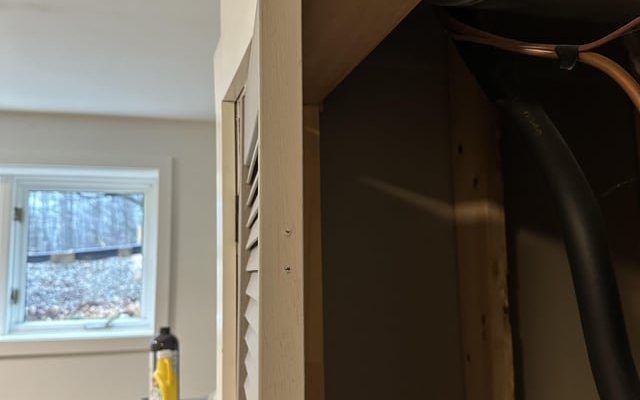
In this article, we’ll walk through the steps to troubleshoot and smooth out your door hinge after you’ve tackled the rust. We’ll dig into the tools you’ll need, the techniques to apply, and share some handy tips to ensure your door opens and closes smoothly. Let’s get that hinge working like new!
Understanding Why Hinge Grit Happens
You might be wondering why your door hinge feels gritty even after you’ve removed the rust. The grit can come from several sources. When rust forms, it can create debris and a rough texture on the metal surface. If this junk isn’t fully cleaned away, it can leave the hinge feeling less than smooth.
Additionally, once rust is removed, what’s left is often bare metal. Without proper lubrication, this surface can create friction, leading to that gritty feeling. Think of it like running your fingers on a chalkboard; without a smooth surface, it just doesn’t glide.
Common Causes of Grit in Hinges
There are a few common culprits behind that gritty sensation:
- Incomplete Rust Removal: If any residue remains, it can interfere with hinge movement.
- Debris Build-up: Dirt and dust can accumulate in the hinge mechanism, causing it to feel rough.
- Lack of Lubrication: Metal on metal creates friction, and without lubrication, you’re left with a rough interaction.
By understanding these causes, you can effectively address the issue and repeat the steps you need to take for smooth movement.
Tools You’ll Need for Troubleshooting
Before you dive into fixing that gritty hinge, it’s helpful to gather your tools. Having everything ready can make the process smoother. Here’s what you need:
- Cleaning Brush: A small wire brush or toothbrush works well to get into those tiny crevices.
- Lubricant: A quality penetrating oil or silicone spray is ideal for providing the necessary glide.
- Cloth or Paper Towels: To cleanup and ensure the area is debris-free.
- Protective Gloves: Safety first! Protect your hands from any chemical cleaners and sharp edges.
Having these tools on hand will set you up for success in troubleshooting your hinge.
Step-by-Step Cleaning Process
Now that you’ve got your tools, let’s break down the cleaning process. The goal here is to get that hinge back in top shape with minimal hassle.
1. Remove the Hinge
First, you’ll want to take the hinge off the door. Use your screwdriver to carefully unscrew the hinge from both the door and the frame. Lay the hinge on a clean, flat surface for easy access.
2. Clean the Hinge
With the hinge removed, grab your cleaning brush and start scrubbing. Focus on getting rid of any rust remnants and dirt. Pay special attention to the pin and the areas around it. You can use a bit of soap and water if necessary, but make sure to dry it thoroughly afterward.
3. Lubricate the Hinge
Once the hinge is clean, it’s time to apply a generous amount of lubricant. This step is crucial. A silicone spray is often the best option since it doesn’t attract dust like oil can. Just a few sprays on the hinge pin should do the trick.
4. Reassemble the Hinge
After lubrication, it’s time to reattach the hinge. Align it carefully and screw it back into place, ensuring it sits snugly. Open and close the door a few times to distribute the lubricant evenly.
Testing for Smooth Operation
After everything is back together, you’ll want to test the door. Open it slowly and listen for any squeaks or grinding noises. Ideally, you should feel a smooth flow. If it’s still gritty, you may need to repeat the cleaning and lubrication steps.
Here’s the thing: If it’s still gritty after a second go, check to see if you missed any spots during cleaning. Sometimes, it’s just a matter of a bit more elbow grease.
When to Replace the Hinge
If the hinge continues to feel gritty despite your best efforts, it might be time for a replacement. Look for signs of significant wear or damage. A new hinge can save you from ongoing frustration and is relatively inexpensive.
Preventing Future Gritty Hinge Issues
Once you’ve resolved the gritty feeling, you’ll want to keep it that way. Regular maintenance can save you time and effort down the line. Here’s how:
- Regular Cleaning: Make a habit of checking and cleaning your hinges every few months.
- Prompt Rust Treatment: If you see rust beginning to form, address it right away to prevent it from worsening.
- Periodic Lubrication: Apply lubricant every few months, especially in humid climates.
By staying proactive, you can keep your hinges functioning smoothly for years to come.
Dealing with a door hinge that feels gritty after rust removal can be frustrating, but with a little patience and the right steps, you can troubleshoot the issue effectively. By understanding why grit occurs and knowing how to clean and maintain hinges, you’ll be able to enjoy smooth door operation once again.
So next time you find yourself facing a stubborn hinge, remember these tips and techniques. You’ve got this! Plus, a well-maintained door hinge makes for a much happier home.
